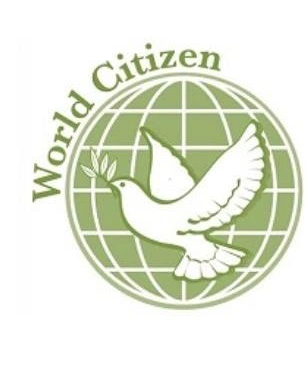
Ryan Gosling The coolest according Time
Time Magazine Coolest Person Committee was determined to pick someone whose cool was tested and pervasive, obvious even to the dorks who work at this magazine. They defined cool in the classic Marlon Brando way an unshakable calm mixed with a confidence that comes from not needing others. Cool is more how than what; they considered world leaders, singers, hackers and a newsmagazine columnist who one of them thought was an obvious pick.
Ryan Gosling, the 2011 Coolest Person of the Year, is a man who is tough but emotional according Time. A movie star who broke up a fight on the streets of Manhattan and was also caught walking down a Manhattan street playing a Strumstick, which is like a ukulele only ukulelier. An Oscar nominee who also smokes, tags graffiti and has a predilection for posing with a fist to the camera but makes dioramas and takes public ballet classes alongside little girls too. He’s the only actor since Andy Kaufman to work as a waiter after making it in show business. One who has a rock band that spent a month accompanying a children’s marionette show in Los Angeles. He is a man who caused a protest outside the Time & Life Building when Peoplemagazine chose Bradley Cooper instead of him as the Sexiest Man Alive.
No wonder for Americans he could be nominated. But in Europe I would prefer to see an other face as coolest person, because he or she really wanted to stick out her neck.

Tunisia’s new President Moncef Marzouki joined flag-waving crowds in Sidi Bouzid in commemoration of the fruitseller Mohamed Bouazizi who’s suicide sparked a wave of unrest which swept from Sidi Bouzid across the Arab world.
Mohamed Bouazizi his mother could find a lot of women who felt with her but also who got the courage to come out of the dark and let their voice be heard.
An intensive campaign of civil resistance, including a series of street demonstrations started of in December 2010 and led to the ousting of long-time President Zine El Abidine Ben Ali in January 2011.
The uprising was mainly a campaign of non-violent civil resistance, which featured a series of demonstrations, marches, acts of civil disobedience, and labour strikes. Millions of protesters from a variety of socio-economic and religious backgrounds demanded the overthrow of the regime of their country. From January 2011 onward Egypt followed and other North African countries joined the protest.
Violent response of the authorities – with the police opening fire on demonstrators – appears to have exacerbated anger and ignited further protests.Together with large numbers of unemployed graduates, frustration with lack of freedoms, the excesses of the ruling class and anger at police brutality seem to have come together to spark an unstoppable wave of public anger. With each passing day, the demonstrations grew larger and more intense. Police cars and government buildings were set ablaze. Students, teachers, lawyers, journalists, trade unionists, human rights activists, opposition politicians and ordinary people poured into the streets to condemn their government’s economic policies, corruption and repression.
Mr. Bouazizi’s death unleashed a wave of pent-up anger across the Arab world; inspired a dozen copycat self-immolations in Arab capitals from Cairo to Algiers; and spawned protests that shared techniques of civil resistance involving strikes, demonstrations, marches, rallies and the use of social media to organize and raise awareness.
“The theme of restoring the dignity of the people pervaded the Arab uprisings,” said Marc Lynch, an international affairs expert at George Washington University and editor of the online magazine Foreign Policy.
Spontaneous uprisings have toppled dictators in Tunisia and Egypt; plunged Libya into civil war; fuelled bloody confrontations in Syria, Bahrain and Yemen; triggered street demonstrations in Algeria, Iraq, Jordan, Morocco and Oman; and drawn protesters onto the streets of Kuwait, Lebanon, Mauritania, Saudi Arabia, Sudan and Western Sahara.

Yemen Female Protesters
In those countries normally it were the men who had to say everything and often women had to stay quit in the corner. But this time women were allowed to come into the forefront and the world could see them marching between the men.
Thousands of women called for the ouster of Yemen’s longtime ruler. Marches in solidarity with the Taiz protesters erupted in several cities, and later women went to join the Tunisian revolt.

Born in Somalia and based in Cairo since 2005, Ms. Hibaaq Osman is a global political strategist who has lived in Somalia, Ethiopia, Sudan, Yemen, Egypt Germany and the United States.
Hibaaq Osman is a Somali humanitarian and the founder and chair of Karama (‘dignity’ in Arabic) launched in 2004, a network of activists across the Middle East and North Africa working to end violence against women and promote female political participation in the Middle East and North Africa. She is a senior fellow of the James MacGregor Burns Academy of Leadership at the University of Maryland and was recently named one of the 500 Most Influential Muslims by The Prince Alwaleed Bin Talal Center for Muslim-Christian Understanding at Georgetown University in 2009. Appointed as V-Day Special Representative for Africa, Middle East, and Asia, Hibaaq Osman has directed V-Day’s international work in these regions since 2002, leading delegations to Afghanistan, Palestine, Korea, India to form collaborations with local women activists.
Ms. Osman also co-founded the Coalition for Peace in the Horn of Africa, which pressured the United States government to assert a positive foreign policy in Africa, and is a frequent author, advisor, and keynote speaker in the field of international women’s rights, peace and conflict resolution, politics and human rights in the Middle East and Africa.
Last June she said at her visit to Holland ‘A democracy, in which fifty per cent of the population do not joins, is no democracy only hypocrisy’
At the uproars the last few moths we could see many women protesters. All kinds of women were included during the revolutions; women with children, women without children, rich, poor, veiled and unveiled. A large part of that women have given up a lot to take part in the revolts. They have seen opportunities like never before. They did things which could never be done before and where unthinkable. Who could have thought that women could become political active in such restricted Islamic countries?
According to Ms. Osman there women’s voices have never been silent, but now, at long last, they’re being heard. And well they should be. But she also warns that they will not just throw away their fight. They earn that also their rights are respected.
Mona Safwan, a participant in the march on March 8, Women’s Day in Yemen said: “The peaceful struggle through the media and pressed for by human rights organizations, the peaceful sit-ins, they did not bear fruit, and also the peaceful demands and peaceful struggle for this country. Now we join the women because the peaceful means did not work. It must be a revolution.”
Hibaaq Osman says: “despite demonstrating, taking risks, mobilizing, suffering, marching, and standing side by side with men in the revolutions and protest movements of the modern era, women have historically found themselves omitted from both power and opportunity in revolutions’ aftermaths. For instance, only 8 percent of women are ever represented in any type of reconciliation plans. The unfortunate historical record is that, from Mexico to Iran to post-Soviet Eastern Europe, women are often left out of post-revolutionary decision-making processes, exacerbated by traditionally lower participation rates in government, military and business.”
Time has chosen the protester as person of the year, but what shall happen with a big part of those protesters, namely the women?
Often after revolutions women are being thanked for their share in the act of revolt and are quickly send to the kitchen sink and the children. We also could see that in Iran in 1979 where women took a big share in the revolt but were more suppressed afterwards than before.
The Sakharov Prize for Freedom of Thought, named after Soviet scientist and dissident Andrei Sakharov, established in December 1988 by the European Parliament as a means to honour individuals or organisations who have dedicated their lives to the defence of human rights and freedom of thought honoured this year five representatives of the Arab people, in recognition and support of their drive for freedom and human rights: Asmaa Mahfouz,
Ahmed al-Senussi, Razan Zaitouneh, Ali Farzat, and posthumously Mohamed Bouazizi.
Asmaa Mahfouz, blogger and one of the founders of the April 6 Youth Movement, who urged people to rise up and overthrow the discredited Egyptian government, said: “I hope the remnants of the Mubarak regime, represented by the Military Council, will not still enjoy support, as they continue to use the worst methods to abort the Egyptian revolution. They will, however, most certainly fail, because there is a strong, solid generation who are ready for sacrifice in order to accomplish their revolution, and to build a new regime based on the principles of freedom and social justice.”
The inclusion of the Egyptian blogger Asmaa Mahfouz acknowledges the importance of social networks in the movement. At the same time it puts a spotlight on the new rulers at the Nile River: Journalists and bloggers once again are facing persecution, and the security forces are acting against the opposition.
We may not forget that the revolt in the Arabic countries has to own a lot to the women who came on the Tahrir square on mass. They were not afraid any more to come onto the streets in the open, to give interviews and to request attention for the situation.
We should acknowledge and celebrate the role of Yemeni and other women in the movement. They are a hopeful sign of the vibrant democracy that might be born in Yemen and other places — if it is allowed to. But the only way to truly honour struggle and sacrifice of these heroines is to make sure they have an equal seat at the policy-making table the day this revolt may come to an end.
+
Read also:
- Peter Goodspeed: Mohamed Bouazizi, ‘Son of the whole world’
The Arab Spring, one year later: We begin a six-part look at the convulsions that have shaken the Middle East and North Africa since the day one year ago when Tunisian fruit vendor Mohamed Bouazizi set himself alight in protest. - The Arab Awakening: Roots of the uprisings
Revolution has shaken the Arab world for a year, as protesters, many armed only with smartphones, stared down heavily armed riot police and rattled the Middle East and North Africa. - Time Video: Why They Protest: Bahrain, Tunisia and Yemen
- Hibaaq Osman
- Women Leading the Way in Yemen by Hibaaq Osman
- Yemen Police Beat Female Protesters With Sticks: Activists
- Crazy, Stupid, Cool By Joel Stein
- European Parliament: Europees parlement / Commissies
- Sakharov Prize for Freedom of Thought 2011: Three finalists for Sakharov Prize 2011
The ‘Arab Spring’ is a symbol for all those willing dignity, democracy and fundamental rights in the Arab world.
The peaceful demonstrations mobilising all kind of citizens, prodemocracy activists, human rights defenders, lawyers and journalists faced brutal repression from regime security forces in all these countries.
The award of the Sakharov Prize to the five nominees -Mohamed Bouazizi, from Tunisia, Asmaa Mahfouz, from Egypt, Ahmed al-Zubair Ahmed al- Sanusi, from Lybia, and Razan
Zeitouneh and Ali Farzat, from Syria who have contributed and still contribute to radical political changes in their respective countries would reaffirm the Parliament’s solidarity and firm support for their struggle for freedom, democracy and the end of authoritarian regimes.- List of Candidates 2011 – EN version List of Candidates 2011 – EN version
- List of Candidates 2011 – FR version List of Candidates 2011 – FR version
- List of Candidates 2011 – DE version List of Candidates 2011 – DE version
- Arab Spring honoured with EP Sakharov Prize
+++
Related articles
- Peter Goodspeed: Mohamed Bouazizi, ‘Son of the whole world’ (fullcomment.nationalpost.com)
- Cradle of Arab Spring celebrates 1st anniversary (ibnlive.in.com)
Sidi Bouzid: Tens of thousands of people packed a provincial town square to celebrate the first anniversary on Saturday of Tunisia’s democratic revolution in the place where it began, unleashing a tide of popular revolt that has transformed the Arab world. - The Protester named 2011 Person of the Year by Time Magazine (marcusampe.wordpress.com)
Time Person of the Year 2011 The Protester
TIME has named the 2011 Person of the Year and it’s no surprise: The Protester. - De Protesteerder door Time verkozen tot Persoon van het jaar(marcusampe.wordpress.com)Geschiedenis duikt dikwijls enkel in een terugblik op. Gebeurtenissen worden enkel beduidend wanneer er wordt op terug gekeken. Het gebeurt meer dan eens als men er midden in zit dat men niet beseft welk een waarde het heeft. Zowel overschatting als onderschatting kan zich dan voordoen. Enkel de tijd zal het in het juiste perspectief kunnen plaatsen.
- Tunisia fetes poor town where revolt year began (thehindu.com)
It was in this hardscrabble town in Tunisia’s arid interior that exactly one year ago the death knell sounded for the decades-old system of dictatorships across the Arab world.+The changes in the Arab world over the past 12 months cannot be overstated. A region synonymous with stagnant authoritarian republics and monarchies is suddenly rife with change for better or worse.The biggest winners so far appear to be the long-repressed Islamist parties, which didn’t always lead the revolts but in the subsequent elections in Egypt, Tunisia and Morocco were the best organized and least tainted by the old regimes.
- Sakharov Prize for Freedom of Thought (greens-efa.eu)
The European Union shamefully assisted for too long the authoritarian rulers of Tunisia, Egypt and Libya. Interested only in maintaining good commercial relations and preventing African migrants from crossing to Europe, the Union accepted the torture of opposition activists and repression of press freedom in these states. - Tunisia unveils Bouazizi cart statue in Sidi Bouzid – BBC News (bbc.co.uk)
Tunisians have unveiled a statue in honour of the man who set himself alight a year ago, unleashing a protest movement that ended President Zine el-Abidine Ben Ali’s 23-year rule. - Tunisians mark year since self-immolation sparked ‘Arab Spring’ (ctv.ca)
As the country that started the Arab Spring, Tunisia appears to be the farthest along in its transformation, having held its freest elections ever that brought to power a moderate Islamist party that most had thought had been oppressed out of existence. - Tunisia fetes poor town where Arab Spring began (thestar.com)
Experts were quick to explain how Tunisia was unique and the Jasmine Revolution was an isolated event — until 11 days later tens of thousands occupied Cairo’s Tahrir Square and began chanting the same slogan heard in Tunisia: “The people want the fall of the regime.”Even during October’s elections, when much of the country was euphoric, the young men of Sidi Bouzid sat sullenly in their cafes and complained that they had been forgotten.Now the focus has returned to this small town surrounded by olive orchards and tall cactus groves, as thousands marched through the streets, watched fireworks and applauded the unveiling of a marble memorial of a vegetable seller’s cart surrounded by empty chairs symbolizing the fallen dictators.Where once there had been little sign of Bouazizi’s sacrifice, the town’s main street has been renamed for him.
One year ago, in a hardscrabble town in Tunisia’s arid interior, the death knell sounded for the decades-old system of dictatorships across the Arab world.
- Tunisia fetes poor town where revolt year began (seattletimes.nwsource.com)
Tunisia’s leaders have promised that the interior will no longer be neglected and say they have drawn up plans to rebalance investment away from the coast.If they can succeed, even as the other countries in the region struggle with the complicated aftermaths of their own pro-democracy movements, Tunisia could once more inspire the Arab world. - A year later, Bouazizi’s legacy still burns (cnn.com)
In another corner of the Arab world, Ibrahim Mothana, a Yemeni activist, said the self-immolation and the ouster of Ben Ali stunned his fellow Yemenis because citizens actually confronted “a police state, where you cannot react.” After months of massive demonstrations, Yemen’s President Ali Abdullah Saleh is now on his way out of office under a power transition plan brokered by a coalition of Gulf Arab states. - Tunisia fetes poor town where revolt year began (seattletimes.nwsource.com)
The changes in the Arab world over the past 12 months cannot be overstated. A region synonymous with stagnant authoritarian republics and monarchies is suddenly rife with change – for better or worse.The biggest winners so far appear to be the long-repressed Islamist parties, which didn’t always lead the revolts but in subsequent elections in Egypt, Tunisia and Morocco were the best organized and least tainted by the old regimes.































 Biblestudents – Bijbelstudenten
Biblestudents – Bijbelstudenten 0 + Bloggers for Peace
0 + Bloggers for Peace Free Christadelphian Ecclesia
Free Christadelphian Ecclesia Hoop tot Leven – Redding in Christus
Hoop tot Leven – Redding in Christus Vrije Broeders in Christus (Free Flemish Christadelphians on Wordpress)
Vrije Broeders in Christus (Free Flemish Christadelphians on Wordpress)















Pingback: Muslim Brotherhood Calls for a “United Arab States” with Jerusalem as its Capital | Congressman Tom Tancredo
Pingback: Rugby Prophecy Day « Christadelphians : Belgian Ecclesia Brussel – Leuven
Pingback: The trigger of Aurora shooting | Marcus' s Space
Pingback: Do we have to be an anarchist to react | Marcus' s Space
Pingback: Social media and asylum seekers | From guestwriters
Pingback: Israeli leaders delight in Europe’s cruelty toward refugees | From guestwriters
Pingback: My two cents on the refugee crisis | From guestwriters
Pingback: Signs of the times – “A new order in the Middle East” – Belgian Ecclesia Brussel – Leuven
Pingback: Yemen: A country in crisis, what the world governments should practice and advocate to bring an end to the conflict – Some View on the World
Pingback: Americans need to end their indifference concerning the war in Yemen – Some View on the World
Pingback: A truce giving Yemenis hopes for peace – Some View on the World
Pingback: Rai al-Youm: Yemen: the truce is over – Some View on the World